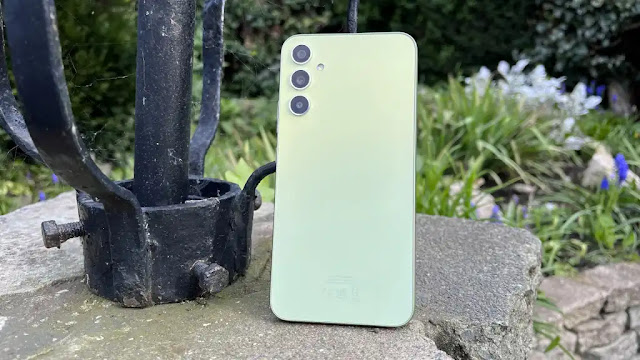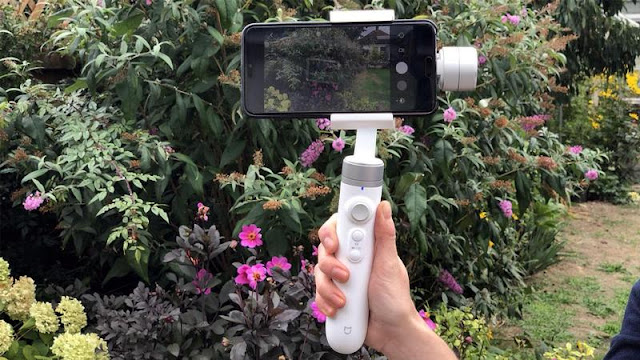DJI's latest phone stabiliser uses a magnetic mount which makes attaching your phone so convenient. It can also cope with big, heavy phones.
Should I Buy The DJI Osmo Mobile 4?
Pros
- Magnetic mount
- Great battery life
Cons
- More expensive than Osmo Mobile 3
Our Verdict
- It's more expensive than the Osmo mobile 3, but the magnetic mount makes it a lot more convenient.
Price When Reviewed
- $149
DJI’s Osmo Mobile gimbals have long been the best choice for anyone wanting a phone stabiliser. Partly that’s because the hardware has been excellent, but also because of the software. Many of its rivals simply can’t compete with DJI’s polished apps. Not that there isn’t room for improvement – there is – but the hardware itself is only half the story.
We weren’t expecting the OM 4 as it has only been a year since DJI launched the Osmo Mobile 3, reviewed. And in case you’re confused, OM 4 is the official new name for the gimbal, not Osmo Mobile 4.
At first glance, there are a lot of similarities: the folding design is the same, as is the tough plastic construction. Controls are the same, too, with a joystick and buttons on the front, a trigger round the back and a zoom slider on the side.
The main update is the new magnetic mount. This allows you to keep either a spring clamp or a stick-on magnet on the back of your phone – both are supplied in the box. This snaps onto the corresponding magnet on the gimbal when you’re ready to shoot.
The obvious benefit is that this is a lot faster than the traditional clamp, but also because it makes the OM 4 smaller when it’s folded up, so you’re more likely to carry it around with you than leave it at home.
Having a magnetic system also removes the need to adjust your phone or the gimbal in order to make it perfectly balanced, a process that’s necessary to avoid overloading the motors and using up battery power unnecessarily.
And the good news is that it works really well: the magnets are so strong that you’re never worried that your phone will fall off while holding the OM 4.
DJI says is has upgraded the motors for more powerful units that can handle the bigger, heavier phones that prevail these days, and that it has used the ‘absolute latest in 3-axis stabiliser technology’. Practically, this means you can have a phone up to 290g and, if you want to use the clamp, one up to 10mm thick.
Just in case you’re not up to speed with 3-axis gimbals, they work in tandem with whatever stabilisation – optical and/or electronic – that your phone already has, making any movement much smoother.
Whether you’re just standing still and shooting or walking or even running, you can get wonderfully stable shots which can look professional once you’ve had a bit of practice.
The OM 4 offers the same basic features as the Osmo Mobile 3: up to 15 hours of battery life, portrait or landscape shooting and the ability to pan with the joystick, or simply move or rotate the grip in the direction you want the camera to point, and the motors will make it happen smoothly.
There are only a few buttons, but they are all multipurpose so you have to remember whether it’s a single, double or triple tap to make something happen.
The trigger is a good example of this: holding it down locks the gimbal so your phone can’t turn left or right (great for ‘slider’ shots), while pressing it once activates ActiveTrack if you’re using the Mimo app.
Press it twice to recentre the framing, and tap it thrice to switch between front and rear cameras. Press once, then press and hold and you’ll enable Sport mode where the gimbal moves a lot faster.
Similarly the buttons on the front have various uses, and one favourite is a double-tap on the Mode button which rotates your phone from landscape to portrait or vice versa. (Double-tapping it when the gimbal is off displays the battery level.)
DJI Mimo App
This is the app which is used with the Osmo Pocket as well as the Osmo Mobile 3. It offers broadly the same set of features for each of those devices as well as the OM 4.
That means you can shoot regular video, slo-motion, timelapse (fixed position), hyperlapse (timelapse plus motion such as pan / tilt) and also motionlapse (which is hyperlapse but where you’re walking around with the OM 4).
Using the OM 4 for single photos is rather pointless unless it’s attached to the tripod, but the magic comes from the ability to stitch nine photos together into one huge-megapixel photo or make automatic 240° panoramas – either vertically or horizontally, and they’ll be better than your handheld efforts without the OM 4.
A new mode for the OM 4 is the Clone Me panorama, which lets you move around in between shots so you can appear multiple times in the final image.
There’s also a new Spin Shot which quickly rotates the phone to produce a fun video transition, so it might be something you only use once in a while.
Features such as gesture control, ActiveTrack 3.0 and Dolly Zoom aren’t new: they were also available on the Osmo Mobile 3.
However, with ActiveTrack, you can now use the joystick to adjust the framing of your shot while the feature is active.
Performance
I’ve had just a few days to use the OM 4 with a beta version of the Mimo app, but I can say that it performs exactly as I expected. It’s practically identical to the Osmo Mobile 3 in use, so produced stable footage from both my Huawei P30 Pro and iPhone X.
Whether new or not, I also discovered something that I did not notice with the Osmo Mobile 3: the buttons and trigger also work in the default camera app on the P30 Pro. That means you can start and stop recording, switch between front and rear cameras and also use functions which don’t depend on the Mimo app such as locking the gimbal with the trigger and rotating the phone from portrait to landscape.
The benefit is that you can switch to other lenses, such as wide-angle or telephoto, something you can’t do in the Mimo app. But you do lose ActiveTrack and other features.
But, depending upon your phone, you might find that you can switch to the wide-angle camera when using the Mimo app, and that was certainly the case with the P30 Pro. But there’s still no way to use the 5x zoom lens: the slider in Mimo just uses digital zoom from 1-10x.
Quite obviously, the quality of video will depend mostly on your phone, but it was good to see options for both 1080p and 4K available in Mimo. I also tried out the new Clone Me mode. It takes a 240° horizontal panorama, with a five-second timer before each of the three shots. It’s difficult to appear in the photos yourself unless you do a trial run and figure out three positions to stand, but it is possible thanks to a series of beeps which tell you when each photo is going to be taken.
Price & Availability
Unlike the Osmo Mobile 3 which came in Standard and Combo versions, there is just one OM 4 package. It comes with a tripod, a soft (not hard) carry case, a USB-C cable, a magnetic phone clamp and an adhesive ring / magnet. I like that DJI doesn’t bother supplying a USB charger: there are way too many USB chargers and the world doesn’t need yet more supplied with every gadget.
The OM 4 is – unfortunately – more expensive than the Osmo Mobile 3. It costs £139 / $149 / AU$239 from DJI.
It’s possible that the price may be discounted a bit by retailers, but that won’t happen for a while. You can buy a standard Osmo Mobile 3 for £99 / $119 / $159 and it's even possible to find the Combo kit for the same price at Heliguy in the UK.
Verdict
If you have an Osmo Mobile 3, there’s not much point in upgrading, but those with older versions which don’t fold will find the OM 4 considerably more portable.
The trickier choice is if you don’t own a stabiliser at all: do you go for the OM 4 or the 3? Ultimately, the OM 4 is just about worth the extra £20 over the Osmo Mobile 3 combo thanks to the convenience of the magnetic mount. But if you can do without the carry case and tripod and want to spend as little as possible, there’s still a strong argument for the standard Osmo Mobile 3. And at the time of writing, you could pick up the Combo package for the same price as the standard anyway.
Specs
- 3-axis gimbal
- Battery life: up to 15 hours
- Charging time: 2.5 hours (10W charger)
- Max Controllable Speed: 120°/s
- Weight of Compatible Phone: 170-290g
- Width of Compatible Phones: Up to 88mm wide and 10mm thick
- Bluetooth 5




















0 comments:
Post a Comment